Scale Creation with Creative Automation
Automate the creative production process with templatized creation, feed-based scale, and multi-point integration.
Learn more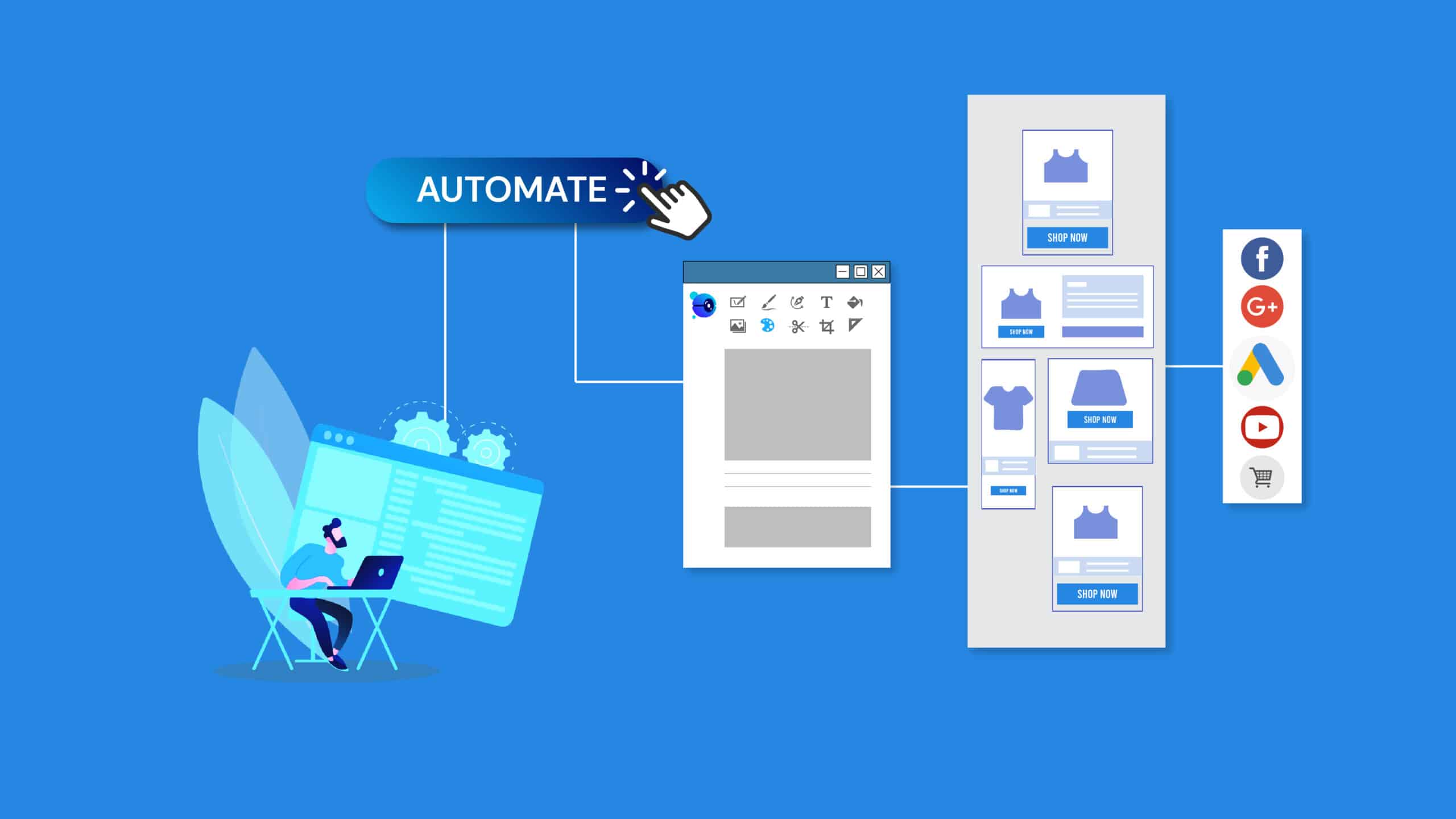
Automate the creative production process with templatized creation, feed-based scale, and multi-point integration.
Learn more
History is repeating itself yet again. The FinTech revolution is sweeping across the country, delivering mobile-first digital banking services to grassroots Indian consumers – for the very first time. In many ways, it is similar to the economic liberalization of the 1990s that took the country from an economic outcast to one of the fastest-growing economies on the planet in less than a decade. If it was a debilitating balance of payments crisis that acted as a catalyst back then, the rise of FinTech was spurred by the twin shocks of demonetization and GST.
Now that almost 80% of Indians have a bank account, the market is ripe for FinTechs to innovate and scale. However, when it comes to marketing, much still remains to be done.
To be sure, FinTechs are taking advantage of the perception gap regarding banks in the mind of the average consumer quite well. For example, 87% of customers surveyed by the Financial Brand, an online marketing magazine, say banks were “annoying, boring, or unhelpful” on social media. FinTechs may not have the deep pockets like traditional financial institutions; however, they have shown that innovative marketing strategies can easily make up for it.
The financial services landscape in our country is now a lot different than what it used to be pre-pandemic. The ‘new normal’ has caused a profound shift in how people think about saving and investing their money. There is a certain uneasiness that will – in all probability – take a while to dissipate. Given the risk factor, the overall public sentiment has coalesced around making the ‘right’ investment choices. Secondly, as new business models like cryptocurrency, peer-to-peer lending, and small-ticket/microloans proliferate, brand engagement will be a key problem before almost all FinTechs.
In other words, there is a trust deficit in the minds of consumers that will need to be filled before you can think about scale. From the marketing perspective, helping consumers adopt a ‘growth mindset’ (as opposed to being risk-averse) in a time of uncertainty will be the big challenge in the 2020s and beyond – one that will require out-of-the-box solutions. There is no one way to achieve this. Many companies are taking an innovative, customer-centric approach to customer acquisition and retention.
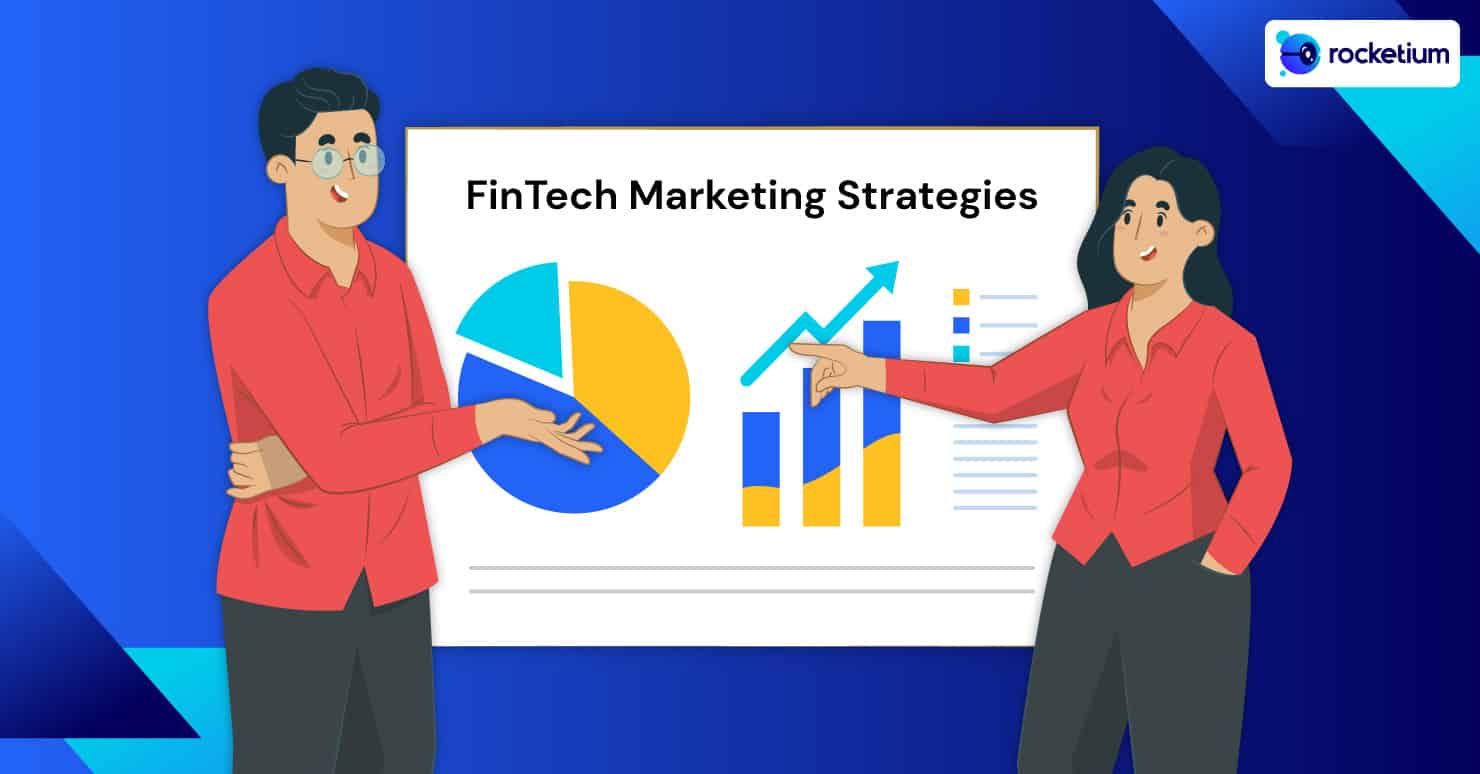
Here are five interesting marketing strategies that FinTech companies are using, across different niches, to engage their audiences:
As individual consumers and small and medium businesses (SMBs) look for ways to mitigate the effects of missed EMI payments or working capital shortfalls, FinTechs like Khatabook have been focussing on educational content to build trust and position themselves as an alternative to traditional sources of finance. This has worked well so far as SMBs, in particular, have historically been ignored by banks. The reason: poor credit or lack of collateral.
Pushed into a corner, these SMBs have had no choice but to approach traditional money lenders who reportedly charged up to 24% interest on term loans. To educate these emerging segments and drive conversions, Khatabook decided to focus on content that was actionable, consumable, and most importantly, multilingual. The reason?
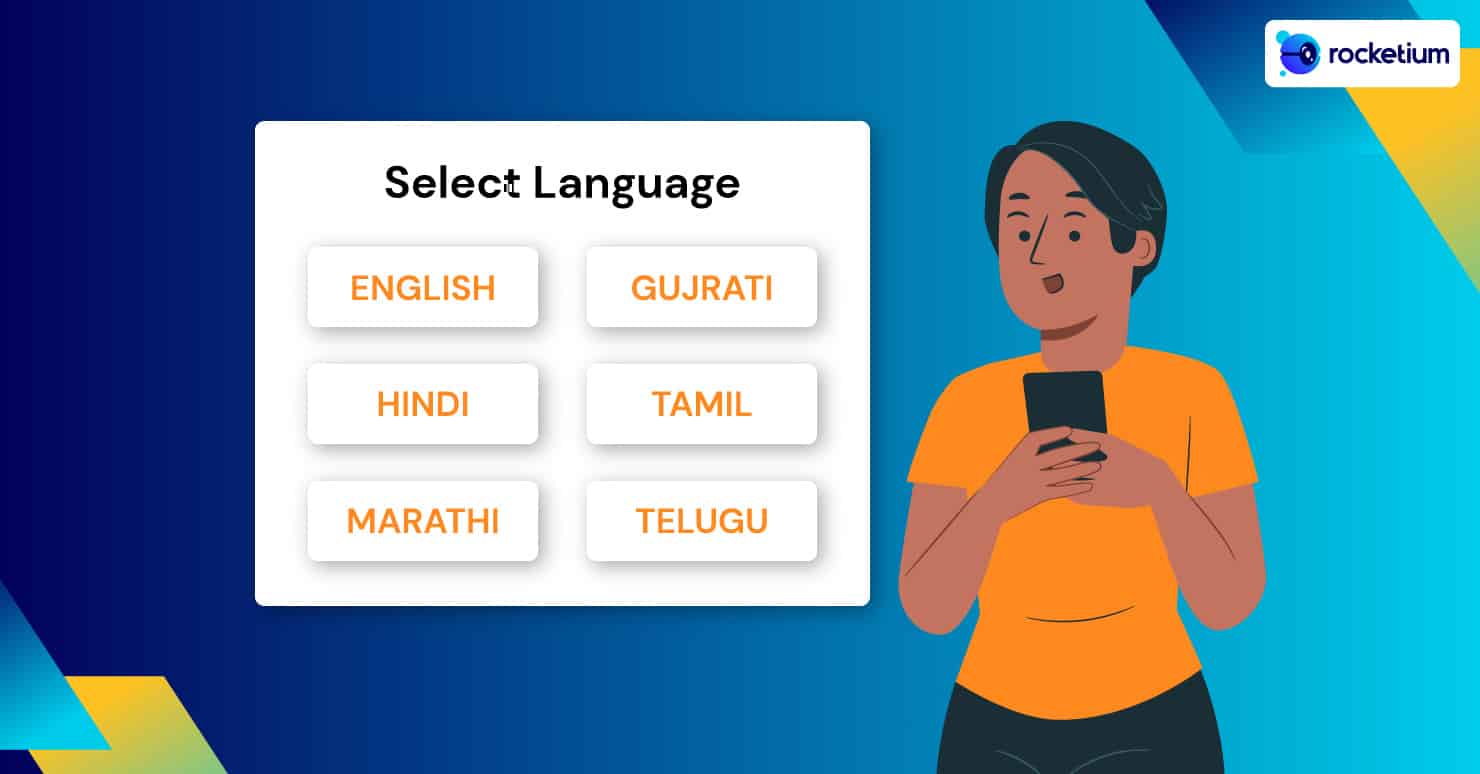
In a vast country like India, language barriers can make it difficult for people in one part of the country. For example, people in the Southern states to engage with content featuring languages commonly used in the North or East. Unfortunately, the majority of FinTech marketing teams mostly use Hindi or English when trying to engage customers in different states.
Khatabook a digital ledger app provider, realized this first-hand when one of their TikTok campaigns started to underperform shortly after launch. After a deep dive into the causes, they decided to create influencer videos in 15 regional languages.
The result: the brand was able to boost app install rates by 60% while cutting cost per install by 20%. The hugely successful campaign ultimately ended up driving one million+ downloads for the company.
Similarly, OkCredit, a business accounts management app, uses vernacular content across its website and social media channels.
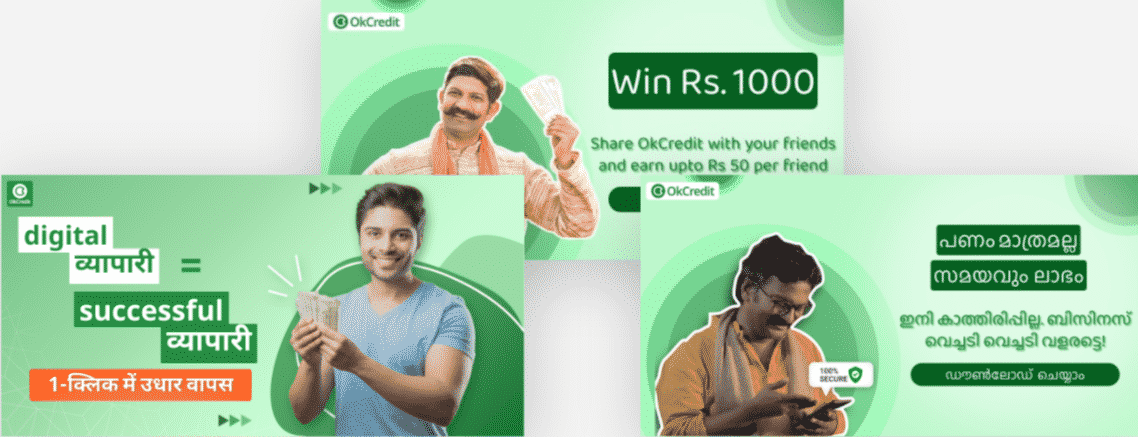
Since its primary target audience is non-English speaking retailers and distributors in smaller towns and cities, the app offers eleven regional language settings at sign-up. Their content marketing efforts also reflects this strategy.
The result: OkCredit has grown to more than 10 million users since 2017.
When it comes to communicating anything finance-related to younger audiences, brands often run into a wall of unconscious bias. No doubt, young, upwardly mobile Millennials and Gen Z are much more aware of the advantages of compounded returns and annuities than their predecessors.
However, they have a marked aversion towards the jargon-heavy disclaimers and financial statements, typically used by banks and other financial institutions. This often alienates them from otherwise well-meaning brands even before the conversation gets going – impatient as they are.
Unfortunately, the lack of proper guidance inhibits a holistic understanding in young adults when it comes to investing for the long term. Then, there’s the question of commissions which also triggers resistance.
For many FinTechs, the focus has now shifted to experiential marketing. It differs from traditional marketing in enabling millennials to make their own choices rather than persuading them to choose one product over the other.
Groww is an investment app, the latest Indian entrant into the unicorn club. It comes with a simple dashboard that makes it easy for users to select, track and manage their own investments. It allows them to import external investments and get customized insights – either automatically or manually via a range of calculators, quizzes, and trackers.
Given the fact that phones now account for 50% of all web traffic, experiential marketing has the potential to drive greater engagement than regular blogs or articles. The company has not completely abandoned the traditional approach, though. Its ‘Ab India Invest Karega’ campaign- a series of online and in-person outreach events – has allowed it to stimulate demand for online investing in different parts of the country. This blended campaign has thus helped clear misconceptions surrounding digital investment products quite quickly, judging from the phenomenal response it has received.
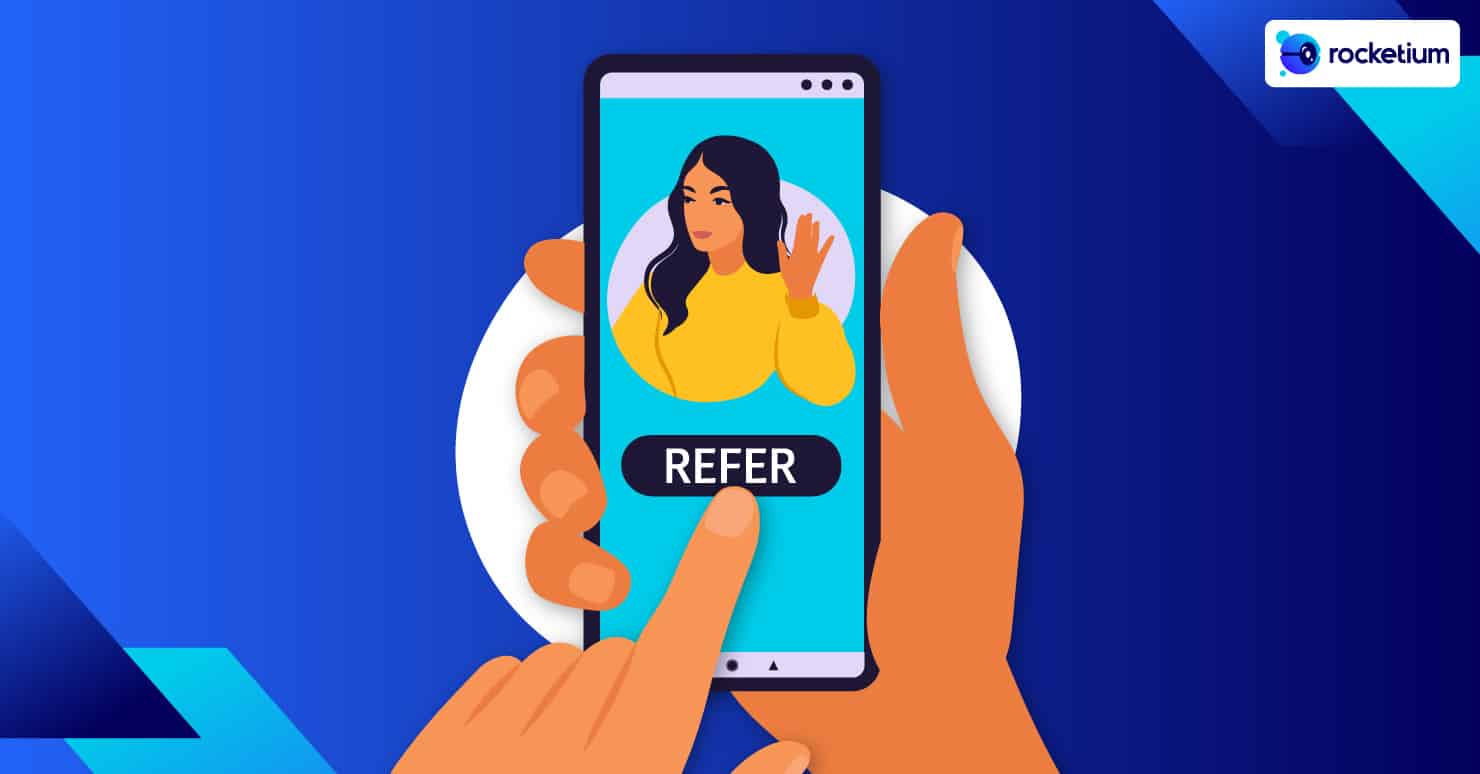
When it comes to SEO and PPC, most ranking keywords are saturated and can cost up to $50 CPC. This makes it difficult for FinTech marketing teams to get decent ROI. To create differentiation, you need to diversify your channels and add new ones that can be scaled while reducing the overall Customer Acquisition Cost (CAC), hopefully enhancing Customer Lifetime Value (CLV). This is where referral programs can be an ideal alternative for FinTech marketing teams.
Referral programs leverage the power of relationships to qualify new leads and convert faster compared to other channels. Often, your existing customers instinctively know who will be a good fit for your product among their friends and colleagues.
By incentivizing referrals, you can make them ‘want’ to advocate you to others. Research shows that in-app referral marketing messages are inherently contextual and less likely to be perceived by users as annoying. Research shows churn rate of customers who have been referred is up to 18% lower than that of acquired ones. In terms of CLTV, the share of revenue from them is up to 16% higher.
Paypal owes much of its early growth to this strategy which was considered path-breaking at the time. Both the referring customer and individual they referred to would receive a $20 credit to their respective PayPal accounts. With time, the referral credit was revised downwards to just $5 today!
In addition to app-based offers, you can also offer referrals further up the value chain. For example, you can partner directly with small banks, gold loan companies, and other players to refer applicants to you that do not meet their lending criteria like collateral or zero payment defaults.
In turn, you can cross-refer applicants that aren’t a good fit for your product in terms of ticket size, risk profile, etc. However, it is critical that you have a strong marketing incentive program in place to keep them engaged and attract more partners over a period of time.
Secondly, to boost conversion, you need to focus on communicating the benefits in a clear and lucid way. Any ambiguity in how your program works could impact participation.
Creating dedicated campaigns for different segments is proven to deliver better returns in such cases. It is here that a creative automation tool can help you create engaging marketing collateral with ease. Collaboration with companies you are not in direct competition with can help you boost growth opportunities.

With digital-only banks growing in popularity, conversational AI chatbots are now firmly a part of the FinTech marketing manager’s toolkit. Conversational chatbots learn about user intent and provide ‘real-time’ responses to customer queries. While their primary use case is customer service, chatbots can readily act as a recommendation engine for new products/services. Based on the interaction data collected, you can segment your user base better, analyze engagement levels and track CLV.
In turn, this can give you vital insights into customer behavior, opening up cross-sell and up-sell opportunities. The result: You can draw customers deeper into your marketing funnel, leading to improved retention.
For example, you can serve product recommendations and convert customers by quickly answering a few of their questions – right within the chat window. Chatbots can thus help you make the most of critical micro-moments, reducing the number of steps involved for customers. Think of chatbots as virtual relationship managers that manage leads relentlessly, 24X7!
SMB lending platform, Flexiloans, has leveraged leading-edge conversational AI technology to automate customer onboarding and deliver contextual marketing recommendations. This has directly contributed to improved conversions and collections across multiple product lines for the company’s FinTech partners. Thanks to the innovative use of marketing automation, the company has added more than 120 B2B partners to its ecosystem over the years.
In the post-pandemic era, a loyalty program can be an excellent way for FinTechs to move away from the discounts and cashback culture that can eat into margins. However, the key is to ensure that you link rewards directly to usage frequency to maximize ROI.
Payments provider, MobiKwik, found that although it had a high app download rate, a large number of its users remained inactive and uninstalled a short while later.
The company responded by adding 50 reward points to each user account a few days after it was downloaded. It was timed around a window in which 80% of existing users completed their first transaction. The qualifier: users needed to spend a minimum of Rs 1,000 to convert the 50 points to cash. The campaign had its intended impact: MobiKwik’s activation rate jumped 72% in a short period of time.
To further incentivize users, MobiKwik also allowed users to redeem loyalty points from their banks through its wallet. This allowed users to add to their cash balance on MobiKwik while driving higher daily average usage for the company. The strategy has also paid off in terms of higher CLV.
The FinTech industry has certainly been impacted by the slowdown in consumption following the pandemic. However, this could be the perfect backdrop for creating lasting differentiation with traditional financial institutions. From the FinTech marketing perspective, the key is to focus on delivering seamless experiences and communicating those experiences in a relatable and interactive manner.
As the regulatory environment improves, FinTechs could be sitting on a historic opportunity to drive financial inclusion and create a real impact on India’s national growth.
Take your FinTech marketing ROI to a new level and deliver high-quality creatives at scale with Rocketium’s creative automation platform.